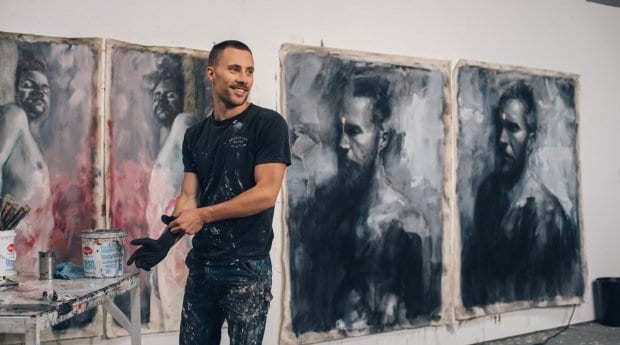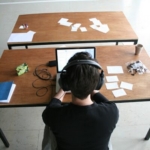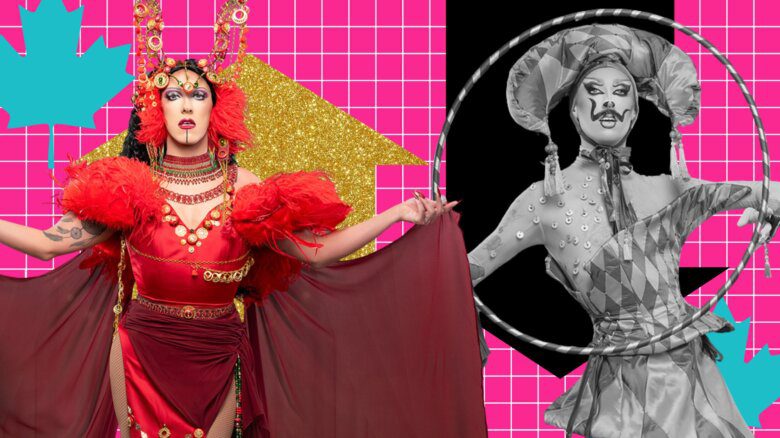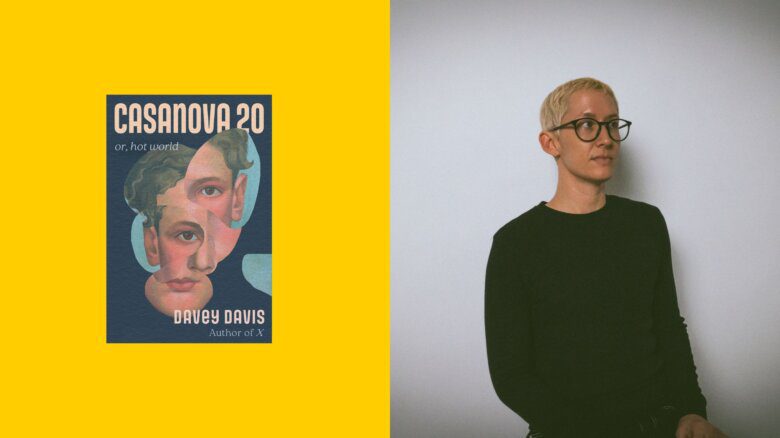The last time we talked to him, Andrew Moncrief wasn’t at his best. The Montreal painter had gone through a heart-wrenching breakup and was in the process of piecing his life together while planning his first solo show, a darkly-tinged series called De/Generate which used physical disfigurement as a metaphor for emotional torment.
Since then, however, it’s been all blue skies. A year and a half later, he’s in love again and living in Salt Lake City with his current boyfriend, Cody (a real estate agent, designer and Utah native).
“There’s a misconception [that] artists have to be miserable to create,” Moncrief says while on a break from his studio. “If you have to be tortured to make art, that’s going to be a pretty sad life. Of course it can be a driving force behind your craft, but ultimately you can’t only work in that mode, otherwise you’re never going to enjoy what you do.”
Inspired in part by his new love’s spiritual practices, he’s worked to incorporate forms of meditation and mindfulness into his daily life — a shift reflected in his current show, Unseen. In lieu of inner pain, the 12 large-scale paintings take a softer touch, showing figures in states of restful introspection.
Though he’s continued to work with human form, his oeuvre has expanded from head-and-shoulders portraiture to incorporate the rest of the body. And while he’s largely maintained his palette of blacks and greys, little hints of colour pop through as well.
“I’m definitely going through a growth spurt as a person right now,” he says. “I can feel myself searching for something, even though I’m not totally sure what it is. I’ve sort of being ODing on self-help books in the last few years, learning how to expand and be better. It’s not a specific religious or new-age practice exactly. It’s just about examining different paths.”
Paralleling his personal journey, he also developed a fixation with classical religious painting, particularly Da Vinci, Rubens and Caravaggio. His interest in the images wasn’t spiritual, as much as it was a fascination with how artists of that period encoded symbols in their works through specific body and hand positions. Working with his models (including the aforementioned Cody) Moncrief had them mimic classical poses he found in his research.
The resulting images capture a certain kind of tranquillity, rather than the unbridled joy his new beau has brought. But perhaps that’s the point — instead of mining life’s highs and lows for material, Moncrief seems content to operate from a more comfortable middle place.
“I’m actually in a really good headspace,” he says. “I didn’t even know where Utah was on a map before the first time I came here. Who would have though it would have been so great for me? It’s definitely exactly where I’m supposed to be right now.”
Paintings by Andrew Moncrief
July 3–Aug 2, 2015
La Petite Mort Gallery, 306 Cumberland St, Ottawa
Vernissage Friday, July 3, 7–10pm
www.


 Why you can trust Xtra
Why you can trust Xtra


